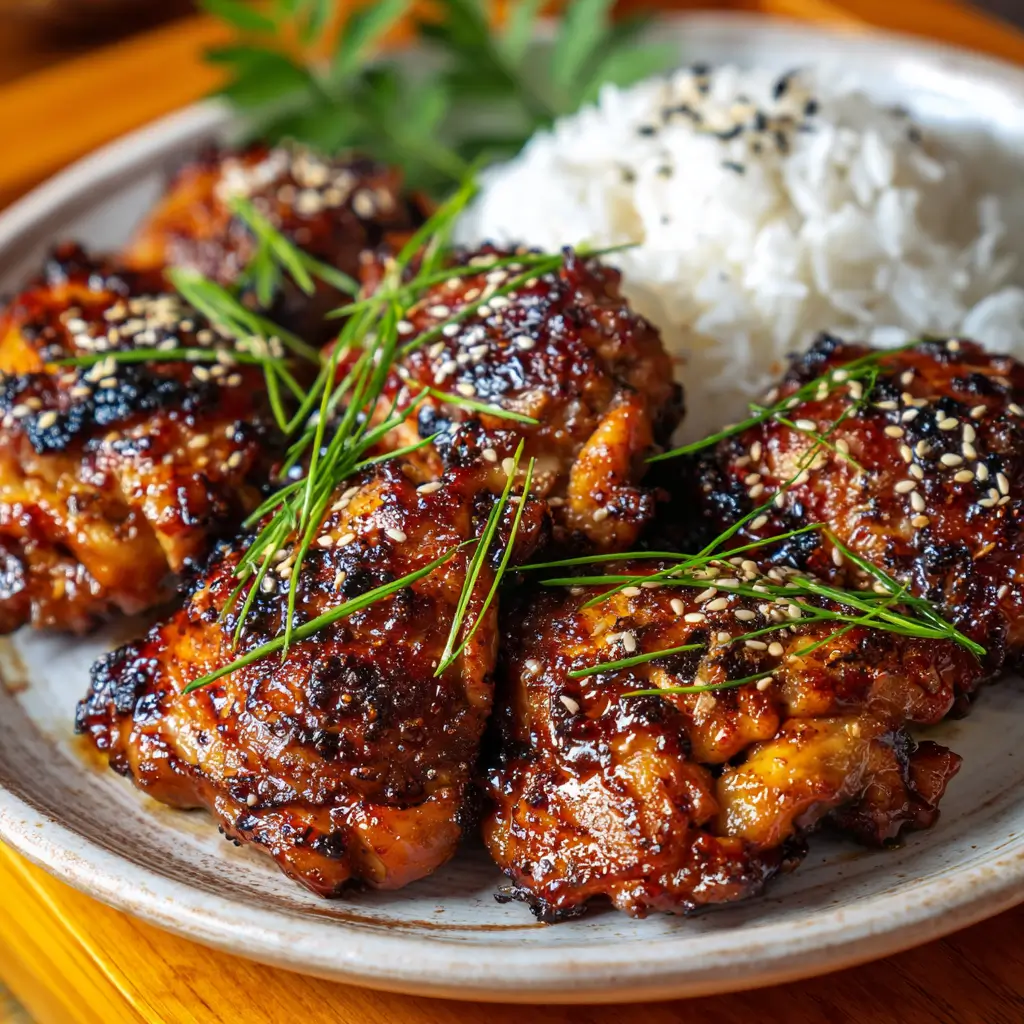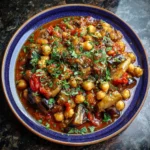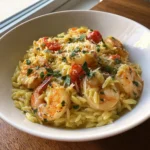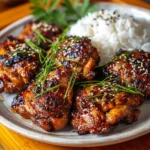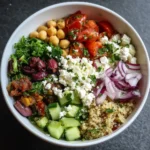Introduction
Korean BBQ Chicken Thighs are a mouthwatering fusion of savory, sweet, spicy, and umami-rich flavors that bring the vibrant essence of Korean street food straight to your kitchen. Known for their deep, complex marinade and juicy, tender texture, these chicken thighs are perfect for weeknight dinners, weekend grilling, or entertaining guests. Whether you’re a long-time fan of Korean cuisine or just beginning to explore its bold tastes, this recipe delivers restaurant-quality results with minimal effort. The richly glazed chicken pairs beautifully with steamed rice, kimchi, and fresh vegetables, making it a complete meal that satisfies cravings and introduces a new favorite to your culinary repertoire.
The History
Korean BBQ, or “Gogi-gui,” has been a cornerstone of Korean culinary tradition for centuries, rooted in ancient methods of grilling meat over open flames. While beef (especially bulgogi and galbi) traditionally dominated the scene, chicken has gained immense popularity in modern Korean cooking, especially as home cooks and restaurants embrace leaner proteins without sacrificing flavor. The use of chicken thighs in BBQ preparations reflects both practicality and taste—thighs stay moist during high-heat cooking and absorb marinades exceptionally well. The marinade itself is a product of Korea’s rich fermentation culture, combining soy sauce, garlic, sesame, and fermented pastes like gochujang and doenjang, which have been used since the Three Kingdoms period. Over time, globalization and the Hallyu (Korean Wave) phenomenon introduced Korean flavors to international audiences, leading to adaptations like Korean BBQ chicken that maintain authenticity while appealing to global palates. Today, dishes like Korean BBQ Chicken Thighs represent the evolution of traditional recipes into accessible, flavorful meals enjoyed worldwide.
Ingredients Breakdown
The magic of Korean BBQ Chicken Thighs lies in the harmony of its ingredients, each contributing a distinct layer of flavor and texture:
- Chicken Thighs (boneless, skin-on): Preferred for their rich, juicy texture and ability to retain moisture during grilling or broiling. The skin crisps beautifully under high heat, adding a satisfying contrast.
- Soy Sauce: The backbone of the marinade, providing saltiness and depth. Use low-sodium soy sauce to control salt levels if needed.
- Brown Sugar: Adds sweetness that balances the salt and spice, while also aiding caramelization during cooking.
- Rice Vinegar: Offers a mild tang that brightens the overall flavor profile and helps tenderize the meat.
- Sesame Oil: Imparts a nutty aroma and richness essential to authentic Korean flavor.
- Fresh Garlic (minced): A pungent, aromatic staple in Korean cooking that enhances savoriness.
- Ginger (grated): Adds warmth and a subtle zing, complementing the other spices without overpowering them.
- Gochujang (Korean red chili paste): A fermented, spicy-sweet condiment made from chili powder, glutinous rice, and soybeans. It adds heat, depth, and a touch of umami complexity.
- Honey or Mirin: Optional additions for extra sweetness and gloss; mirin (sweet rice wine) adds a delicate floral note.
- Toasted Sesame Seeds: Used as a garnish for crunch and nuttiness.
- Green Onions (sliced): Fresh garnish that adds color and a mild onion bite.
- Optional Add-ins: Crushed red pepper flakes for more heat, pineapple juice for natural sweetness and enzymes that tenderize, or grated Asian pear for a fruity twist.
Step-by-Step Recipe
Prep Time: 15 minutes (+ 2–24 hours marinating)
Cook Time: 20–25 minutes
Serves: 4
- Prepare the Marinade: In a medium bowl, whisk together 1/3 cup soy sauce, 1/4 cup brown sugar, 2 tablespoons rice vinegar, 2 tablespoons sesame oil, 4 cloves minced garlic, 1 tablespoon grated ginger, 2 tablespoons gochujang, and 1 tablespoon honey (or mirin). Mix until the sugar dissolves and the paste blends smoothly.
- Marinate the Chicken: Pat 6 boneless, skin-on chicken thighs dry with paper towels. Place them in a large resealable plastic bag or shallow dish. Pour the marinade over the chicken, ensuring each piece is evenly coated. Seal and refrigerate for at least 2 hours, preferably overnight for maximum flavor penetration.
- Preheat Cooking Surface: Preheat your grill, oven broiler, or stovetop grill pan. For grilling: heat to medium-high (about 375°F–400°F). For broiling: place oven rack 6 inches from the heat source and preheat on high.
- Cook the Chicken: Remove chicken from the marinade, letting excess drip off. Reserve 1/4 cup of the marinade for basting (do not reuse raw marinade unless boiled first). If grilling or using a grill pan, place chicken skin-side down first to crisp the skin. Cook for 6–8 minutes per side, basting occasionally with reserved marinade, until internal temperature reaches 165°F and juices run clear.
- Glaze and Finish: During the last 2–3 minutes of cooking, brush the chicken generously with additional marinade or a glaze made by simmering leftover marinade in a small saucepan for 3–5 minutes until thickened. This creates a sticky, glossy finish.
- Rest and Serve: Transfer chicken to a plate, tent loosely with foil, and let rest for 5 minutes. This allows juices to redistribute, ensuring moist meat. Slice or serve whole, drizzle with any pan drippings, and garnish with toasted sesame seeds and sliced green onions.
Tips
- Marinate Longer for Deeper Flavor: Overnight marination (up to 24 hours) significantly enhances taste and tenderness.
- Don’t Skip the Rest: Always allow cooked chicken to rest before slicing to prevent moisture loss.
- Control the Heat: Gochujang can burn easily due to its sugar content. Cook over medium heat if grilling or broiling to avoid charring.
- Use a Meat Thermometer: Ensures perfect doneness without drying out the meat. Target 165°F at the thickest part.
- Crispy Skin Tip: Start cooking skin-side down and avoid flipping too early. Let it sear undisturbed for optimal crispness.
- Sear & Oven-Finish: For even cooking, sear on the stove and finish in a 375°F oven for 10–12 minutes.
- Reserve Marinade Safely: Set aside a portion before adding to raw chicken to use for basting or glazing, avoiding cross-contamination.
- Double the Glaze: Simmer extra marinade into a thicker sauce to serve on the side for dipping.
Variations and Customizations
This recipe is highly adaptable to suit different tastes and dietary needs:
- Spicy Level Adjustment: Reduce gochujang for mild flavor or add sriracha or red pepper flakes for extra kick.
- Chicken Alternatives: Use bone-in thighs, drumsticks, or even chicken breasts (reduce cooking time to avoid dryness).
- Vegetarian Option: Replace chicken with firm tofu, portobello mushrooms, or cauliflower steaks. Press tofu well to absorb marinade.
- Pineapple Twist: Add 1/4 cup pineapple juice to the marinade for tropical sweetness and natural tenderizing enzymes.
- Low-Sugar Version: Substitute brown sugar with monk fruit sweetener or reduce sugar and increase mirin or fruit juice slightly.
- Grill-Free Method: Bake at 400°F for 25–30 minutes, flipping halfway and basting toward the end.
- Korean Street Style: Chop cooked chicken into bite-sized pieces, toss with extra glaze, and serve over rice with a fried egg and kimchi.
- Meal Prep Friendly: Marinate and cook in batches, then store in containers with rice and veggies for up to 4 days.
Health Considerations and Nutritional Value
Korean BBQ Chicken Thighs offer a balance of protein, healthy fats, and flavor, but mindful preparation enhances their nutritional profile:
- Protein-Rich: Chicken thighs provide about 25–30g of protein per 6 oz serving, supporting muscle maintenance and satiety.
- Healthy Fats: Thighs contain more fat than breasts, including heart-healthy monounsaturated fats, especially when skin is consumed in moderation.
- Sodium Awareness: Soy sauce is high in sodium. Opt for reduced-sodium versions and control portion sizes to manage intake, especially for those with hypertension.
- Sugar Content: Brown sugar and gochujang contribute carbohydrates. For lower sugar, reduce added sweeteners and rely on natural fruit-based alternatives.
- Fermented Benefits: Gochujang contains probiotics from fermentation, which may support gut health in moderation.
- Balanced Meal Tip: Serve with brown rice or quinoa, steamed broccoli, or a cucumber salad to boost fiber and nutrients.
- Cooking Method Impact: Grilling or broiling reduces added oils compared to frying. Avoid charring excessively to minimize harmful compounds.
- Dietary Modifications: Gluten-free? Use tamari instead of soy sauce. Keto-friendly? Omit sugar and use a keto-approved sweetener, reducing fruit-based liquids.
Nutrition Estimate (per serving, 1 thigh with marinade): Calories: ~320, Protein: 28g, Fat: 16g (Saturated: 4g), Carbohydrates: 15g, Fiber: 1g, Sugar: 12g, Sodium: 800mg (varies by soy sauce).
Ingredients
- 6 boneless, skin-on chicken thighs (about 2 lbs)
- 1/3 cup soy sauce (low-sodium preferred)
- 1/4 cup packed brown sugar
- 2 tablespoons rice vinegar
- 2 tablespoons toasted sesame oil
- 4 cloves garlic, minced
- 1 tablespoon fresh ginger, grated
- 2 tablespoons gochujang (Korean red chili paste)
- 1 tablespoon honey or mirin
- 1 tablespoon toasted sesame seeds (for garnish)
- 2 green onions, thinly sliced (for garnish)
- Optional: 1/4 cup pineapple juice or grated Asian pear
Directions
- In a mixing bowl, combine soy sauce, brown sugar, rice vinegar, sesame oil, minced garlic, grated ginger, gochujang, honey, and optional pineapple juice. Whisk until smooth and sugar dissolves.
- Place chicken thighs in a zip-top bag or glass dish. Pour marinade over chicken, seal or cover, and refrigerate for 2 to 24 hours.
- Preheat grill, broiler, or grill pan to medium-high heat. Remove chicken from marinade, shaking off excess. Reserve 1/4 cup marinade for basting (set aside before contact with raw meat).
- Place chicken skin-side down on the cooking surface. Cook for 7 minutes without moving to develop a sear and crisp skin.
- Flip and cook for another 6–8 minutes, basting with reserved marinade. Internal temperature should reach 165°F.
- For extra glaze, simmer leftover marinade in a small saucepan over medium heat for 5 minutes until thickened. Brush over chicken during final minutes of cooking.
- Remove from heat, rest for 5 minutes, then garnish with sesame seeds and green onions.
- Serve hot with steamed rice, kimchi, and fresh vegetables.
FAQ
Can I use chicken breasts instead of thighs?
Yes, but breasts cook faster and dry out more easily. Reduce cooking time to 5–6 minutes per side and monitor temperature closely.
Is gochujang necessary?
It’s key for authentic flavor, but you can substitute with a mix of sriracha and miso paste (1:1 ratio) for similar depth, though the taste will differ slightly.
Can I make this in advance?
Absolutely! Marinate up to 24 hours ahead. Cooked chicken stores well in the fridge for 3–4 days and reheats nicely in a skillet or microwave.
How do I make it less spicy?
Reduce gochujang to 1 tablespoon or omit it entirely. Add 1/2 teaspoon smoked paprika for color without heat.
Can I freeze marinated chicken?
Yes. Freeze chicken in the marinade in a sealed bag for up to 3 months. Thaw in the refrigerator before cooking.
What sides go well with Korean BBQ Chicken?
Popular pairings include steamed white or brown rice, kimchi, pickled radishes, stir-fried bok choy, cucumber salad, or lettuce wraps for DIY tacos.
Can I air fry these thighs?
Yes! Air fry at 375°F for 18–22 minutes, flipping halfway and brushing with glaze in the last 5 minutes.
Why did my sauce turn out thin?
Simmer unused marinade longer to reduce and thicken. Cornstarch slurry (1 tsp cornstarch + 1 tbsp water) can also be added while boiling.
Summary
Korean BBQ Chicken Thighs deliver an irresistible blend of sweet, spicy, and savory flavors through a deeply aromatic marinade and perfectly cooked meat. Easy to customize and ideal for any occasion, this dish brings the bold taste of Korea to your table with minimal effort and maximum satisfaction.
